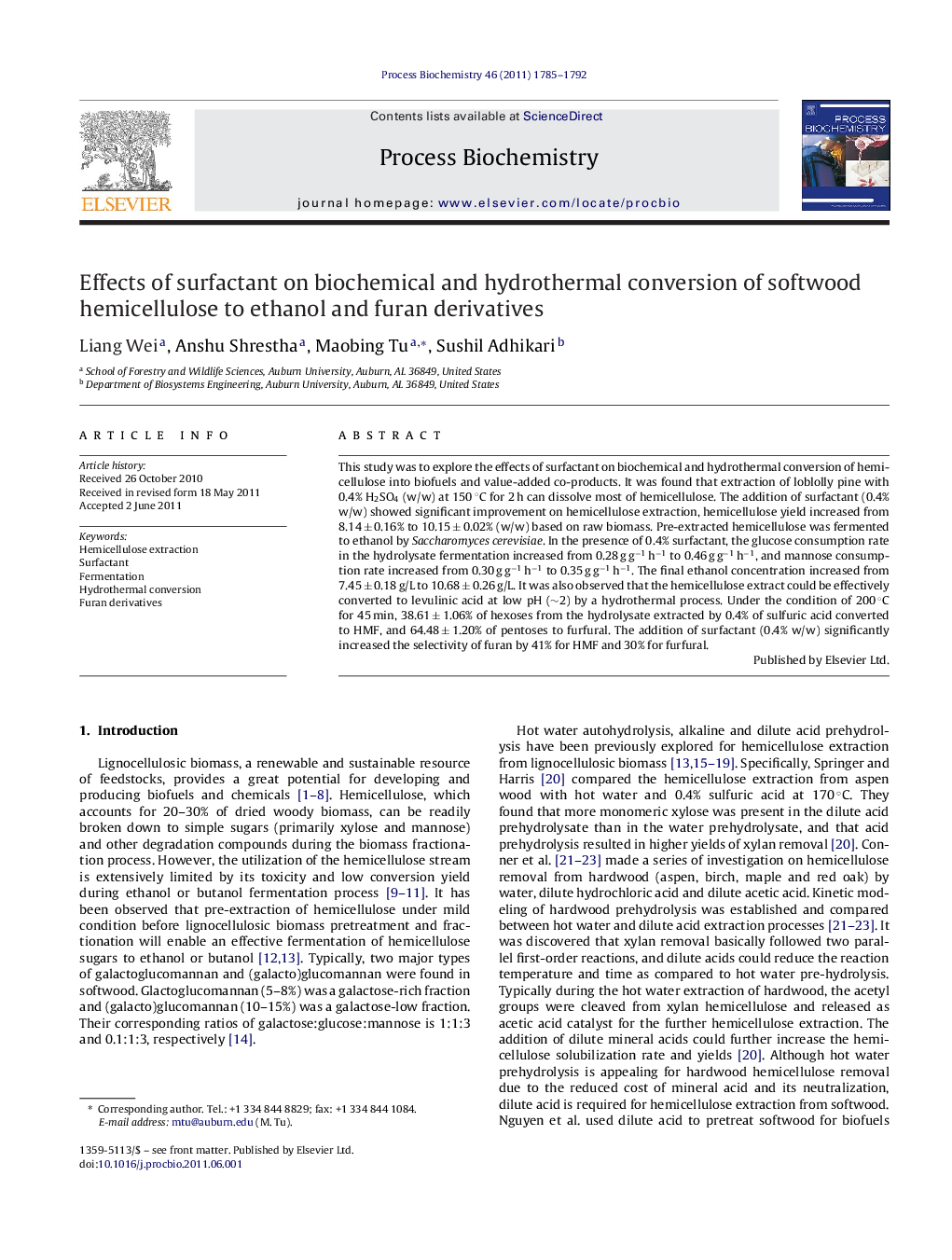| Article ID | Journal | Published Year | Pages | File Type |
|---|---|---|---|---|
| 10235481 | Process Biochemistry | 2011 | 8 Pages |
Abstract
This study was to explore the effects of surfactant on biochemical and hydrothermal conversion of hemicellulose into biofuels and value-added co-products. It was found that extraction of loblolly pine with 0.4% H2SO4 (w/w) at 150 °C for 2 h can dissolve most of hemicellulose. The addition of surfactant (0.4% w/w) showed significant improvement on hemicellulose extraction, hemicellulose yield increased from 8.14 ± 0.16% to 10.15 ± 0.02% (w/w) based on raw biomass. Pre-extracted hemicellulose was fermented to ethanol by Saccharomyces cerevisiae. In the presence of 0.4% surfactant, the glucose consumption rate in the hydrolysate fermentation increased from 0.28 g gâ1 hâ1 to 0.46 g gâ1 hâ1, and mannose consumption rate increased from 0.30 g gâ1 hâ1 to 0.35 g gâ1 hâ1. The final ethanol concentration increased from 7.45 ± 0.18 g/L to 10.68 ± 0.26 g/L. It was also observed that the hemicellulose extract could be effectively converted to levulinic acid at low pH (â¼2) by a hydrothermal process. Under the condition of 200 °C for 45 min, 38.61 ± 1.06% of hexoses from the hydrolysate extracted by 0.4% of sulfuric acid converted to HMF, and 64.48 ± 1.20% of pentoses to furfural. The addition of surfactant (0.4% w/w) significantly increased the selectivity of furan by 41% for HMF and 30% for furfural.
Related Topics
Physical Sciences and Engineering
Chemical Engineering
Bioengineering
Authors
Liang Wei, Anshu Shrestha, Maobing Tu, Sushil Adhikari,
